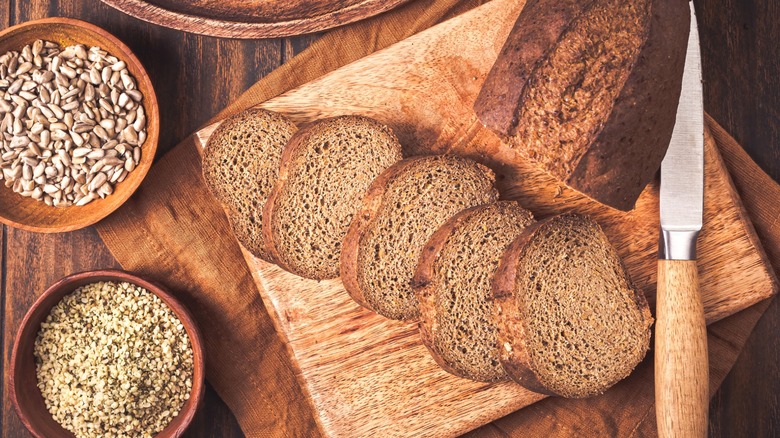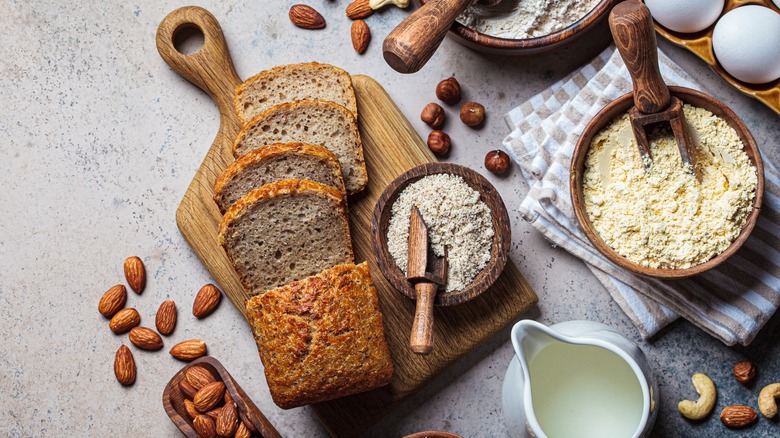The Bubbly Addition That Makes Homemade Gluten-Free Bread So Much Better
There's no denying we all love that satiated feeling we get after enjoying a mouthful of good bread, perfectly illustrated by the fact that bread tends to be one of the most missed foods by folks who practice gluten-free lifestyles. Unfortunately, even the best gluten-free bread generally leans more dense than airy; lacking that light, chewy consistency which embodies an appealing loaf of bread. However, according to Vivian Villa, chef and founder of Villa's Authentic Sauces and UnButter, there's a secret weapon that can give it a much-needed upgrade in the texture department.
"Gently incorporating carbonated water adds a lightness and some structure to gluten-free bread through the bubbles," Villa told The Takeout. "Which create air pockets in the dough." That airy texture we all know and love is a result of gluten creating elasticity throughout the loaf, and adding bubbly liquid works as an alternative to the sometimes problematic protein. "Adding carbonated water mimics gluten to some extent," Villa continued. "It's acidity helps to jumpstart yeast activity." Still, like most other culinary tasks, the devil is in the details.
Attention to detail is key for gluten-free bread
When folks buy store-bought gluten-free bread, they're hoping to come home with a loaf that has an appealing crumb and chewy texture. Making it at home is challenging because the components used to create that effect in regular bread aren't present. That means every ingredient used needs all the help it can get.
Villa drove that point home by explaining how she gives her gluten-free bread that extra attention. "Start with very cold carbonated water for sturdier bubbles," she said. "Sift and resift all the flours together to aerate as much as possible and gently mix and fold wet into dry (do not overmix and deflate the bubbles)." When kneading regular bread dough, it can usually withstand a little overmixing, but gluten-free bread is a different beast. If you pop the bubbles intended to make it light and airy, all you did was add some extra moisture to the dough without any additional benefit.
Even if your carbonated water retains its bubbly composition, the bulk of the loaf is given its structure from the flour in the mix. It deserves just as much consideration, if not more, than your secret ingredient does. "Sifting and resifting of the flours is crucial for obtaining lightness," Villa continued. "Acids, sugar, leavening agents like baking powder and eggs contribute to lightness and moisture." Every ingredient used in gluten-free bread dough plays a role in the overall texture. If they aren't all treated with care, you may end up with a brick-like loaf.

